Photos: Jupiter Struck By Space Rock (Again)
One Hit (to the Body)
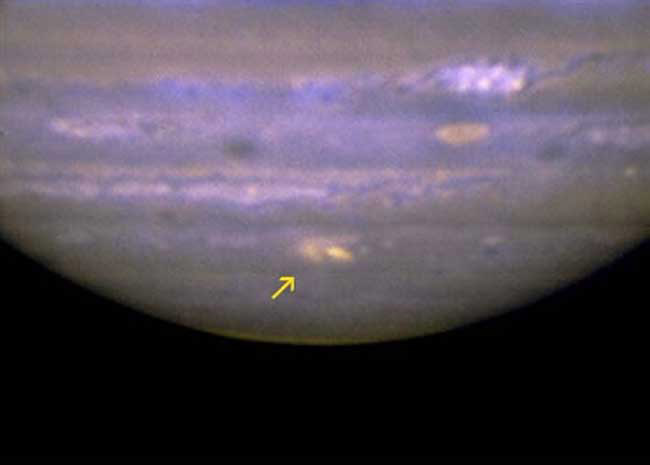
A variety of images depict the spot on Jupiter likely caused by an asteroid, though a comet was initially suspected, in July 2009. It appeared similar to the impacts of Comet Shoemaker-Levy's fragments on Jupiter in 1994. This image shows the impact site as a yellow spot at center bottom, and was taken by the Gemini North telecope on Mauna Kea, Hawaii, July 22, 2009.
Images Are Worth Repeating
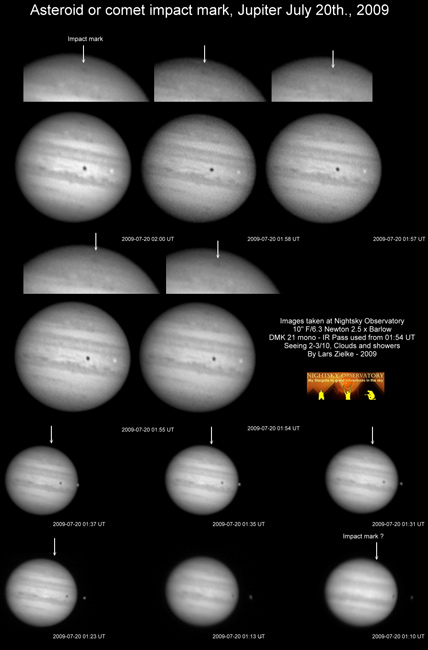
Lars Zielke made these images of the impact on Jupiter from Tvis, Denmark on July 20, 2009. Arrows indicate the impact site.
Hawaiian Eye
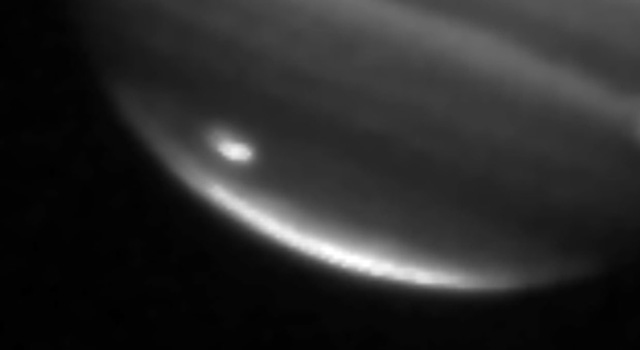
This shot of the impact on Jupiter's south polar region was taken by NASA's Infrared Telescope Facility in Mauna Kea, Hawaii, on July 20, 2009.
Look Sharp!
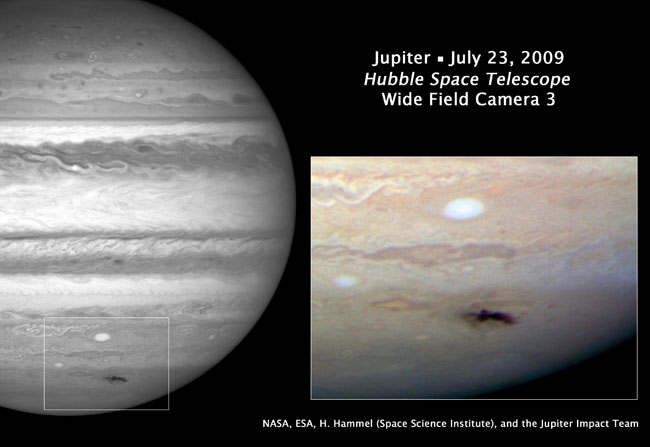
Hubble Space Telescope took the sharpest visible-light picture of the atmospheric debris from the collision with an asteroid on July 19, 2009. Notably, this was Hubble's first science observation following its repair and upgrade.
It Just Impacted on the Surface
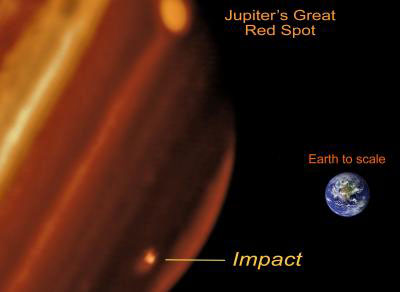
The scar from the impact appeared July 19 in Jupiter's southern hemisphere, and grew larger than the Pacific Ocean. This infrared image taken with Keck II on July 20 shows the new feature observed on Jupiter and its relative size compared to Earth.
Just Dropped In
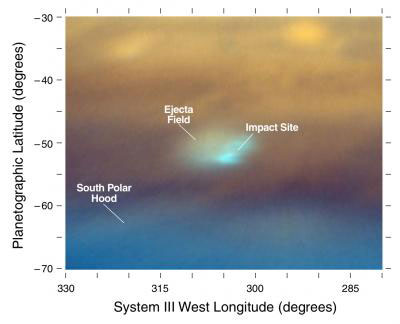
This false color image shows the impact site in Jupiter's southern hemisphere, with features marked and latitude and longitudinal lines marked.
Wrong Way Up
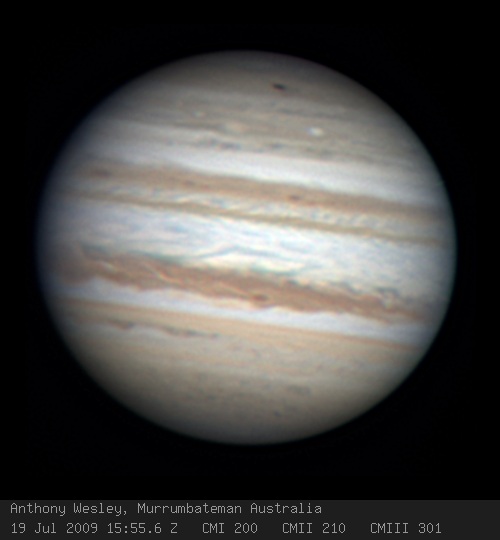
South lies at the top of this Jupiter image taken on July, 19, 2009, by amateur astronomer Anthony Wesley, the discoverer of the impact mark. He used a 14.5-inch telescope at home in Murrumbateman, Australia.
Breaking space news, the latest updates on rocket launches, skywatching events and more!
Another View
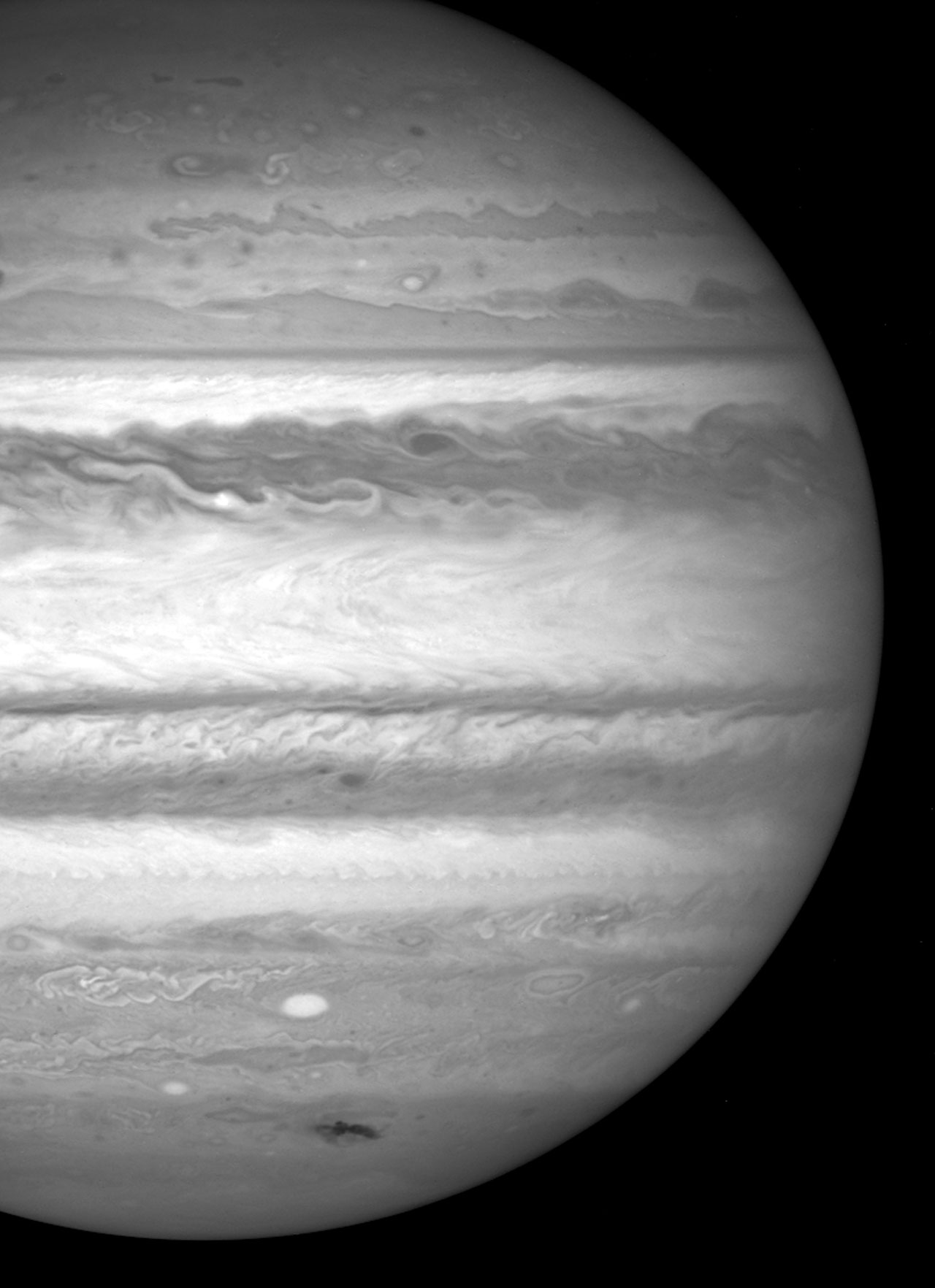
Hubble used its Wide Field Camera 3 (WFC3) to take this picture on July 23, 2009, including the newly discovered spot.
Feels Like the First Time
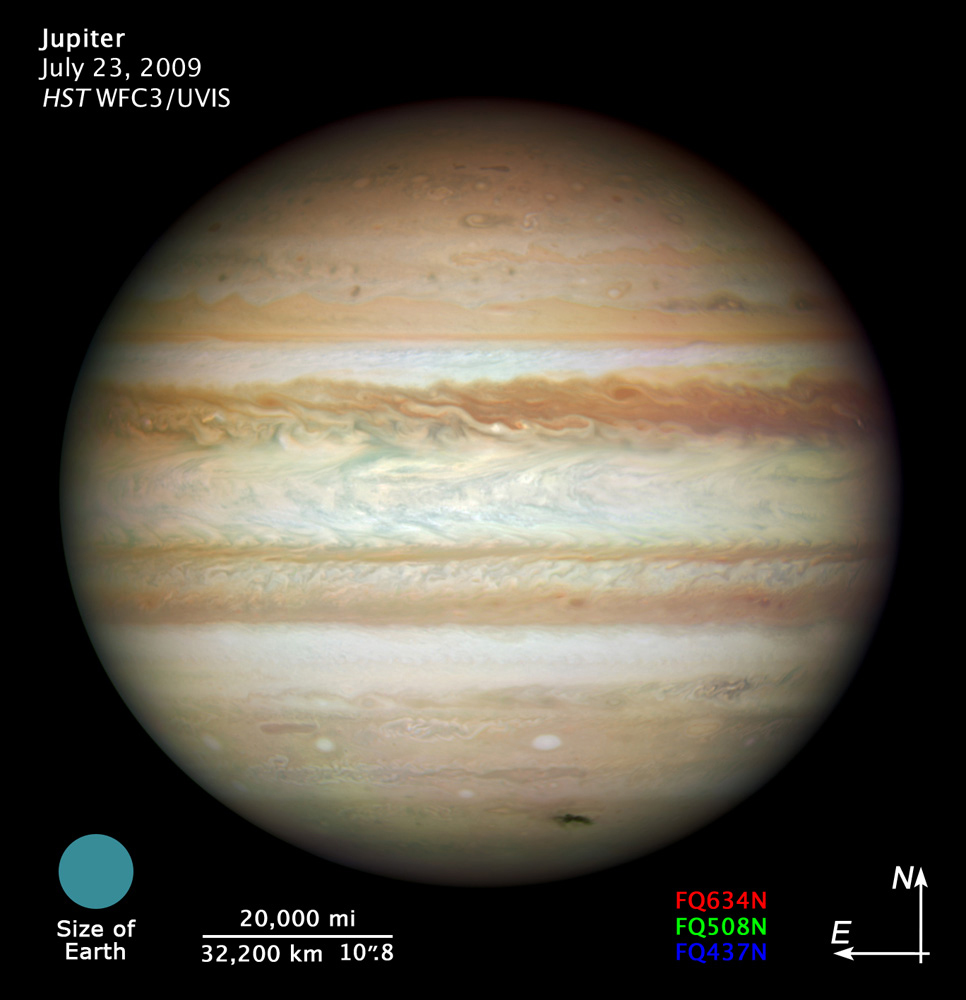
Hubble used its brand-new camera, the Wide Field Camera 3 (WFC3), to take its first full-disk natural-color image of Jupiter. It is the sharpest visible-light picture of Jupiter since the New Horizons' flyby in 2007. The dark smudge at bottom right represents debris from a comet or asteroid that plunged into Jupiter's atmosphere and disintegrated.
Train Drops on Jupiter

Six images made by Hubble combine in this mosaic of Comet P/Shoemaker-Levy 9, taken on May 17, 1994, before the fragments collided with Jupiter. At that time, the comet's train of 21 fragments stretched 710 thousand miles (1.1 million km), or 3 times the distance between Earth and the Moon.
A Blast from the Past
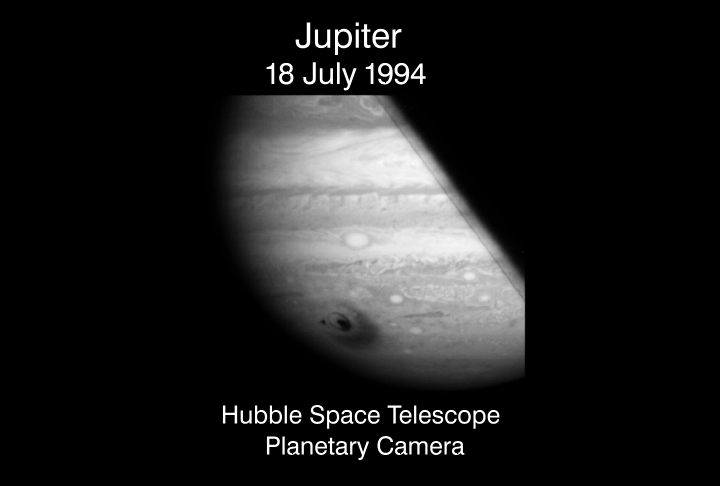
Jupiter as seen by Hubble's Planetary Camera on July 18, 1994, showing the impacts of Comet P/Shoemaker-Levy 9's fragments on the surface.
Join our Space Forums to keep talking space on the latest missions, night sky and more! And if you have a news tip, correction or comment, let us know at: community@space.com.

Space.com is the premier source of space exploration, innovation and astronomy news, chronicling (and celebrating) humanity's ongoing expansion across the final frontier. Originally founded in 1999, Space.com is, and always has been, the passion of writers and editors who are space fans and also trained journalists. Our current news team consists of Editor-in-Chief Tariq Malik; Editor Hanneke Weitering, Senior Space Writer Mike Wall; Senior Writer Meghan Bartels; Senior Writer Chelsea Gohd, Senior Writer Tereza Pultarova and Staff Writer Alexander Cox, focusing on e-commerce. Senior Producer Steve Spaleta oversees our space videos, with Diana Whitcroft as our Social Media Editor.
